What is Radon?
Radon is a colourless, odourless natural radioactive gas formed by the radioactive decay of the small amounts of uranium that occur naturally in all rocks and soils.
In outside air the levels are low but it can accumulate inside buildings.
Where can it be found?
Radon gas can be found in all countries at various levels. In the UK the higher levels can be found in Devon, Cornwall, parts of Somerset, Derbyshire, Northamptonshire and Leicestershire. There are also lower level “pockets” in a number of other areas around the country. The Health Protection Agency carries out periodic surveys across the UK to ascertain the levels.
How it is measured?
Radon is measured and reported in units of activity per cubic metre of air: Bq/m3.
The average level in the UK is around 20 Bq/m3; with some levels as high as 10,000 Bq/m3.
There are required UK Action Levels; simply put these are:
- 200 Bq/m3 in residential properties
- 300 Bq/m3 in occupational facilities
Where the levels are above these, mitigation measures must be put in place to bring them below the Action Levels. The processes to reduce levels can be very simple.
How does Coastline monitor Radon levels?
Coastline Housing recognises the higher than average risk in Cornwall and undertakes a rolling 5 year cycle of re-testing both homes and workplaces to confirm ongoing radon levels and effectiveness of any radonreducing measures.
This means that, at some point, we may send you Radon sensors to keep in your property for a fixed amount of time in order to read your Radon levels.
If the levels of Radon in your home are higher than we would like, then there are things we can install to help bring these levels down such as sumps and pumps.
If we need to do this then we will talk you through it step by step and answer any questions you have.



